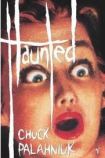6 Famous Reclusive Authors
Writing is a solitary activity that appeals to many people with an introverted nature, myself included. Some authors take their introversion to the extreme and become recluses.
This week’s blog post is dedicated to 6 famous reclusive authors:
Emily Dickinson
(10th December 1830 – 15th May 1886)
Emily Dickinson was a prolific American poet, who penned over 1700 poems. However she had fewer than a dozen poems published during her lifetime, and it was only after her demise when younger sister Lavinia discovered her poetry that the world discovered her remarkable talents. Undoubtedly the primary reason for Dickinson’s lack of acclaim during her lifetime was her reclusive habits, which by the late 1860s’ entailed her rarely leaving the house, and speaking to visitors from the other side of her closed front door.
Thomas Pynchon
(Born: 8th May 1937)
Thomas Pynchon is an American fiction and non-fiction writer. His best known novels are The Crying of Lot 49 (1966) and Gravity’s Rainbow (1973). Gravity’s Rainbow won the 1974 U.S. National Book Award for Fiction. Pynchon is a notoriously private man, who refuses to give interviews and has rarely been photographed. The author did however allow his voice to be used for his two brief appearances in The Simpsons, in which he wears a paper bag over his head to hide his identity. His latest book, Bleeding Edge, was published in 2013.
Harper Lee
(Born: 28th April 1926)
The American novelist is best known for her one and only published book, the 1960 Pulitzer Prize-winning novel To Kill a Mockingbird. Harper Lee is also recognized for having assisted her friend Truman Capote in writing his seminal work, In Cold Blood. Harper Lee’s reclusive behaviour has entailed refusing to give speeches, and all but disappearing from public life for four decades. The Monroeville, Alabama resident surprised many, when at the age of seventy-nine she did an interview for the New York Times.
Cormac McCarthy
(Born: 20th July 1933)
Cormac McCarthy is an American novelist, screenwriter and playwright who has written 10 novels. His accolades include winning the Pulitzer Prize for The Road (2006) and the U.S. National Book Awards for All the Pretty Horses (1992).
The New Mexico resident is a notorious recluse, who once failed to show for a banquet given in his honour. As McCarthy never gave interviews the public were not even aware what the author looked like. In 2007 the author made an appearance on the Oprah Winfrey Show, in addition to showing up at the Academy Awards to see the film adaptation of his book, No Country For Old Men, win Best Picture. He has not been seen in public since.
J.D. Salinger
 (1st January 1919 – 27th January 2010)
(1st January 1919 – 27th January 2010)
The reclusive J.D. Salinger was an American author, whose seminal work The Catcher in the Rye (1951) spent thirty weeks on the New York Bestseller List, and went on to sell over ten million copies worldwide. To this day the book continues to sell around a quarter of a million copies a year.
Two years after The Catcher in the Rye’s publication Salinger withdrew completely from public life. For the next half a century the author ignored journalists and fans alike, and from 1965 no longer offered his works for publication.
Marcel Proust
(10th July 1871 – 18th November 1922)
French novelist, essayist and critic Marcel Proust is widely considered to be one of the best authors of all time. His most famous work, À la recherche du temps perdu (Remembrance of Things Past), was published in seven parts between 1913 and 1927.
Proust was a society figure in his younger years, but following his father and mother’s death, and his own increasing poor health, he withdrew from public life and stayed at home. The last three years of his life were spent in his soundproofed room, sleeping during the day and working at night on his seminal work, À la recherche du temps perdu.






































